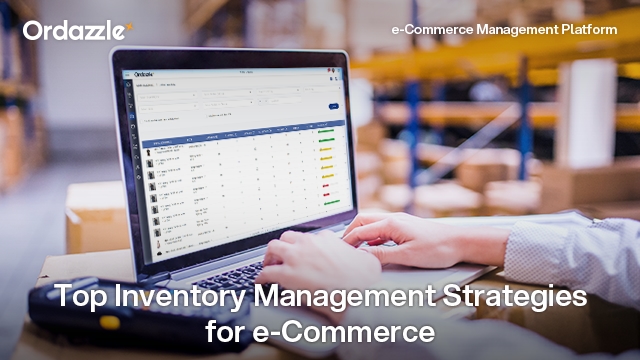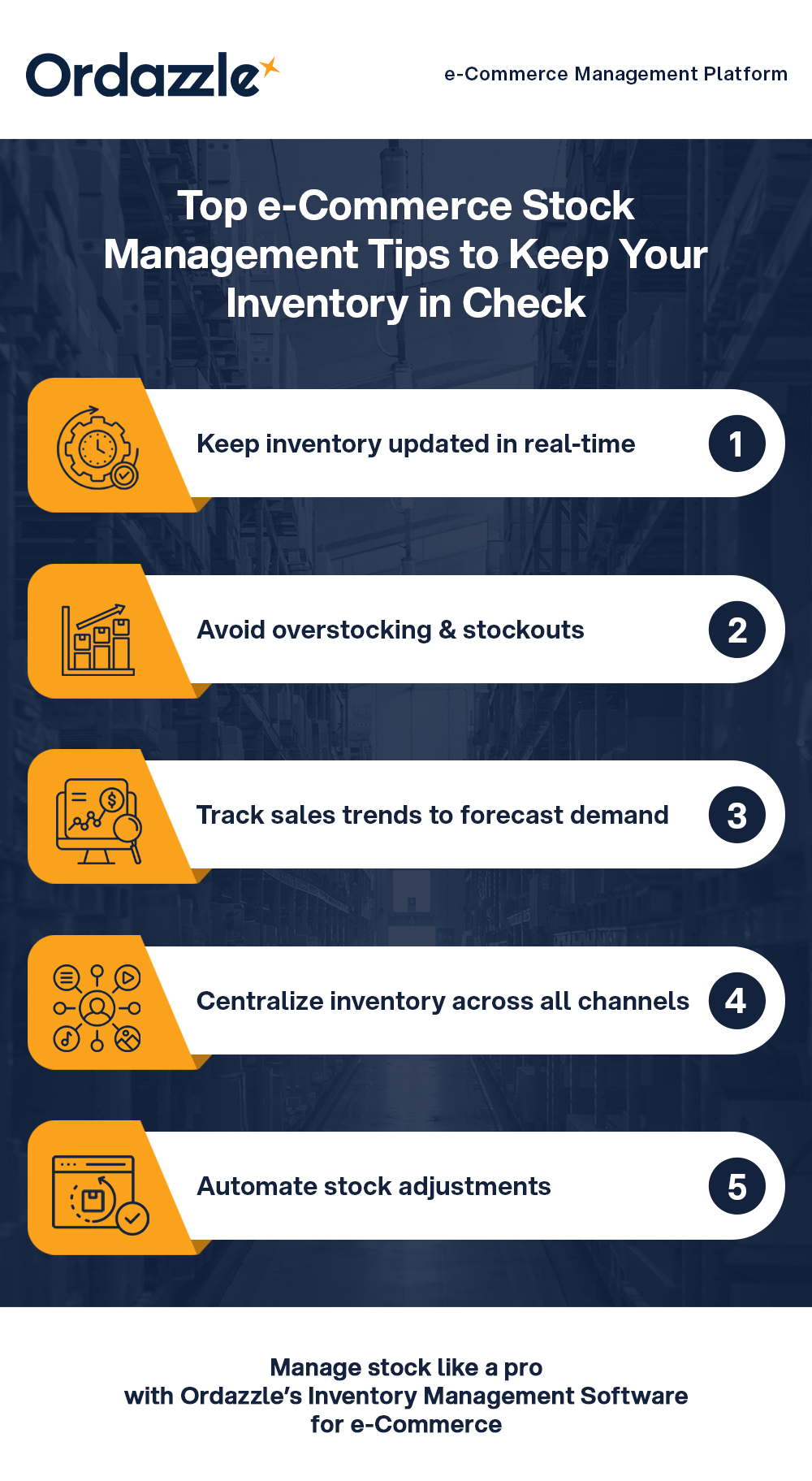Maximize e-Commerce Efficiency: Top Inventory Management Strategies & Software

e-Commerce inventory management plays a crucial role in ensuring business continuity and profitability for today’s fast-moving world of digital commerce. It’s the process of tracking, storing, and managing product quantities across multiple sales channels, warehouses, and fulfillment centers.
A strong e-Commerce inventory management system allows businesses to maintain real-time visibility into their products, forecast demand accurately, and avoid costly stock imbalances. For business owners, this means fewer errors, faster fulfillment, and stronger customer loyalty.
Why Effective Inventory Management Matters for e-Commerce
Efficient inventory management directly affects sales, brand reputation, customer satisfaction, and overall operational costs. Poorly managed stock can lead to overstocking, stockouts, or misplaced inventory, all of which impact brand trust and revenue.
Key challenges for e-Commerce stock management include:
- Managing stock across multiple marketplaces and regions
Real-time visibility issues between warehouses and online stores - Difficulty predicting demand or managing seasonality
Maintaining visibility across multiple sales channels - Handling manual data updates and inventory mismatches
A reliable inventory management system for e-Commerce helps overcome these challenges by automating updates, integrating systems, and providing accurate insights into product performance.
Key Strategies to Optimize Your e-Commerce Inventory
1. Centralize Multi-Channel Inventory Control
e-Commerce merchants often sell across multiple platforms, such as brand websites and online marketplaces (Amazon, Flipkart, Shopify). Managing them separately causes duplication and confusion. Centralized e-Commerce inventory management ensures all channels reflect accurate, real-time stock availability, preventing overselling or order delays.
2. Use ABC Analysis for Smarter Prioritization
Not all products require equal attention. ABC analysis segments inventory based on value and frequency of sales:
A-items: High-value, low-quantity items needing tight control
B-items: Moderate value and movement
C-items: Low-value, high-volume stock
This approach ensures capital isn’t locked in slow-moving stock and replenishment focuses on priority SKUs. It further helps allocate time and resources efficiently to improve cash flow and reduce carrying costs.
3. Automate Reordering with Smart Thresholds
Automation ensures stock levels never dip below safety margins. By setting minimum thresholds, the system automatically triggers reorder notifications when inventory reaches predefined limits. This minimizes manual tracking errors, eliminates guesswork and ensures timely restocking, especially during promotional campaigns or peak seasons.
4. Integrate Inventory with Sales & Fulfilment Systems
Siloed systems slow down operations. And a connected ecosystem is key. Linking your inventory management system e-Commerce setup with OMS, WMS, ERP, and accounting tools provides a unified flow of data, from order creation to fulfillment, enhancing speed, transparency, scalability, efficiency, and accuracy.
5. Track Performance with Analytics & Demand Forecasting
Data-driven insights are the backbone of modern inventory management for e-Commerce. Analytics enable you to understand sales trends, regional insights, seasonal spikes, best-performing SKUs, and slow movers. Advanced e-Commerce inventory software equipped with AI-driven forecasting helps anticipate future demand, allowing better procurement planning and cost management.
Choosing the Right Inventory Management System for e-Commerce
Selecting the right inventory management system for e-Commerce is one of the most impactful technology decisions for modern e-Commerce merchants. The ideal solution should not only track stock but also connect every aspect of your retail operation, from purchasing and warehousing to fulfillment and returns.
Here’s what to look for when choosing the best platform for your business:
1. Real-Time Synchronization Across Channels
Accurate, real-time updates across marketplaces, web stores, and warehouses prevent overselling and improve customer confidence.
2. Centralized Dashboard and Control
A consolidated view streamlines e-Commerce stock management and helps monitor availability, pending orders, and reorder points from a single interface without toggling between tools.
3. Automated Order Routing and Fulfilment
Smart routing rules can assign orders to the most optimal warehouse or courier, ensuring faster delivery and reduced logistics costs.
4. Automation and Reordering
A robust e-Commerce inventory software automates repetitive workflows like reordering, purchase order creation, and inter-warehouse transfers, reducing manual work and error margins.
5. Advanced Analytics and Demand Forecasting
Integrated analytics in an inventory management system e-Commerce setup enable precise demand prediction, supporting data-backed purchasing and minimizing wastage.
6. Seamless Integration and Scalability
Your software should scale with your growth and integrate seamlessly with OMS, ERP, accounting, and shipping tools for end-to-end visibility.
7. Unified Commerce Compatibility
Unified commerce ensures a connected experience for customers and staff alike. Choosing an inventory management system for e-Commerce that syncs data across sales, fulfillment, and returns enhances transparency and efficiency.
Platforms like Ordazzle bring this unified approach and empower e-Commerce businesses to manage inventory across channels, automate replenishment, and gain full operational visibility through a single integrated dashboard.

How Ordazzle Simplifies e-Commerce Inventory Management
Ordazzle’s e-Commerce inventory management system combines automation, analytics, and unified commerce capabilities to transform how e-Commerce brands manage their inventory. With centralized visibility across all channels, predictive analytics, and AI-driven automation, it helps businesses minimize stockouts, accelerate fulfillment, and scale with confidence.
Key capabilities include:
- Automated reordering and replenishment using predictive analytics
- Centralized control for stock across marketplaces and warehouses
- Integration with existing OMS, ERP, and accounting systems
- AI-powered recommendations for demand forecasting and performance optimization
- By aligning technology with retail goals, Ordazzle enables smarter, faster, and more connected e-Commerce operations, making inventory management a strategic advantage rather than a daily challenge.
Frequently Asked Questions
1. What is e-Commerce inventory management and why is it important?
e-Commerce inventory management is the process of tracking and controlling products across sales channels, warehouses, and suppliers. It ensures you have the right stock available at the right time — minimizing storage costs, avoiding stockouts, and improving customer satisfaction.
2. How does an inventory management system for e-Commerce improve efficiency?
A dedicated inventory management system for e-Commerce automates manual processes like reordering, stock updates, and order fulfillment. It ensures data consistency, reduces errors, and enables better decision-making through analytics and real-time visibility.
3. What are the best practices for inventory management for e-Commerce businesses?
- Centralize inventory across all channels
- Automate replenishment processes
- Use forecasting tools to predict demand
- Regularly audit physical and digital stock
- Choose software that integrates with other systems
4. Which software is best for e-Commerce inventory management systems?
There’s no one-size-fits-all solution. Platforms like Ordazzle, Unicommerce, and Zoho Inventory offer robust capabilities for unified e-Commerce inventory management, depending on business scale and complexity.


